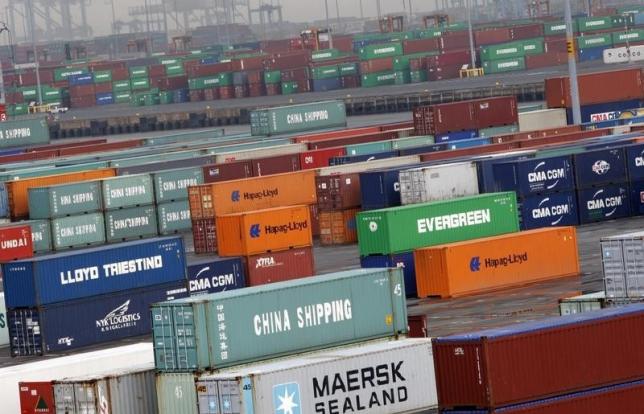US trade deficit widens; weakness abroad fuels export drop

WASHINGTON - The US trade deficit widened in May, fueled by a drop in exports that could heighten concerns over weak overseas demand and a strong US dollar.
The Commerce Department reported on Tuesday that the trade gap grew $1.2 billion to $41.9 billion. That was less than the $42.6 billion deficit expected by analysts and suggests Wall Street economists may slightly raise their forecasts for economic growth in the second quarter.
But the drop in exports in May highlights a change in the tenor of economic growth since the United States exited the 2007-2009 recession. The economy relied more on export-led industries such as manufacturing early in the recovery, but growth is increasingly coming from domestic drivers like construction and services as the economic cycle matures.
Exports fell $1.5 billion, or 0.8 percent, to $188.6 billion in May, led by a drop in overseas sales of US-made capital goods. Imports fell by about $300 million, or 0.1 percent, to $230.5 billion.
Prices for US Treasuries rose after the data, while US stock index futures were unchanged. The dollar gained against a basket of currencies.
Since the middle of last year when the Federal Reserve made clear it was planning to raise interest rates to keep the economy from eventually overheating, the dollar has strengthened, making US exports less competitive.
Since that time, Europe's economy also has been on shaky ground and the European Central Bank has eased monetary policy, causing the euro to weaken against the dollar. European policymakers are currently fighting a debt crisis in Greece that threatens to rip apart the continent's monetary union.
Exports of goods to Germany fell 6.0 percent in May from the prior month, according to non-seasonally adjusted figures. Sales fell 4.2 percent to France, 2.1 percent to Mexico and 3.0 percent to Japan.
The US economy contracted at a 0.2 percent annual rate in the first quarter, hit by bad weather, a strong dollar, spending cuts in the energy sector and disruptions at West Coast ports.
Other economic data, including figures on hiring and consumer spending, have pointed to a rebound during the second quarter, and a firming domestic economy could encourage the Fed to raise rates later this year.
In May, the drop in imports came as purchases from China rose 9.5 percent. That could fan further criticism from US manufacturers that Chinese firms are using a cheap currency and unfair subsidies to gain market share in America.
At the same time, US net imports of oil fell to $5.8 billion in May, the lowest level since 2002. - REUTERS







